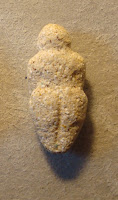In one of
my workshops at the British Library I begin by asking students how many stars
they would give the English language. Uusally it averages out at four; by the
end of the workshop I have worried and perplexed them into lowering their
assessment to two or three. Yet we know the language is capable of incidentally
producing phrases and sentences of staggering beauty. ‘Elbow’ is reckoned by
many to be the most beautiful word in the language, yet it refers to a part of
the body which seldom makes viewers swoon; why ‘elbow’ rather than ‘eyebrow’,
which for centuries was so important a feature of the face that its placing
drove women to shave theirs off and replace them with false ones?
One of my
favourite sentences in the language comes near the end of Heming and Condell’s
preface to the first folio of Shakespeare’s plays (1623). After the wonderful
bombast with which they castigate previous publications of the plays – ‘stolen
and surreptitious copies, maimed and deformed by the frauds and stealths of
injurious imposters’ – they include in their text surely one of the most successful
pieces of advice ever: Read him therefore, and again, and again. This begins
with a combination of sounds in
the first three words demanding a steady pace, followed by the forced break of
the comma, and then another strongly rhythmic and again slow phrase, the
divided repetition of the nasal sound of ‘again’ sounding like a bell inside
the head. It sets the reader up for the wonderfully embracing sentiments of the
end of the preface, which honour Heming and Condell’s fellow writers
introducing Shakespeare, the playwright himself, his readers, and readers they
might introduce to his work. But ‘read him therefore, and again, and again’
stays in the mind, like the memory of something we know to be right.
Yesterday I
came across something very sad but very beautifully written, the narrative of the death
of a young woman from a drug overdose in 1787. Dr Priest is writing to his colleague Dr Hamilton
from Ipswich; he begins by stating that he was sent for to oversee the case of
a young woman. ‘Her name, as I am told, was Lydia Spratt’. I have always felt
that the genius of the iambic rhythm is that it observes and reflects the
rhythm of much spoken English; this sentence, ‘her name …’, is a great example
of this. It could be early seventeenth-century dramatic verse.
Lydia
Spratt was ‘the servant girl of a farmer’. Dr Priest states ‘the only
information which I received, was, that they could not wake her’, and it soon
transpires that she has taken an overdose of laudanum, which she was accustomed
to take for a stomach complaint. He gives her ipecacuanha ‘without the least
effect’, and manages to get her to swallow fluids without any apparent muscular
motion. He bleeds her, but the blood flows slowly, and is ‘very black’. He gets
some vinegar and brandy into her, and has her body rubbed with this, but to no
avail. In desparation she is taken outside and laid on a cask, which is rolled
about, and then sat in a chair. But she does not regain consciousness, and dies
an hour later. ‘Her breathing became more and more laborious; at the end of
every expiration, there seemed to be total inactivity of the lungs for some
moments, and the succeeding inspiration was long. I should call her death, a
forgetting to breathe’.
This last
sentence, though it does not have that iambic rhythm, has an expressive pace.
Though it is possible to pronounce the first clause swiftly, the second clause
demands to be spoken slowly, and seems to expire at the end of the sentence
– the word ‘breathe’ is almost
onomatopoeic. And the break in the middle reflects the ‘total inactivity’, the
forgetting.






